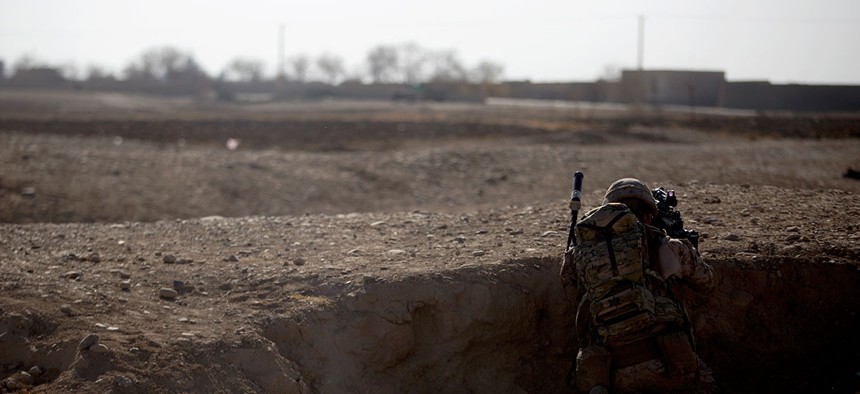What the Long, Corruption-Enabling, Mostly Failed Afghanistan-Stabilization Effort Tells Us
It’s about managing expectations: ours about the timeline, the foreign population’s about governance.
A damning report on the United States’ attempts to stabilize Afghanistan has two lessons that resonate in the nearly-post-ISIS landscape of Syria and Iraq: Arrogant reconstruction timelines will doom the effort from the start, and meeting the local populations’ expectations about governance and services is key.
More than 17 years into America’s war in Afghanistan, the Special Inspector General for Afghanistan Reconstruction, or SIGAR, released its fourth lessons-learned report, this one on stabilization.
The conclusions are grim: “Despite some very heroic efforts to stabilize insecure and contested areas in Afghanistan between 2002 and 2017, the program was mostly a failure,” SIGAR chief John F. Sopko said Thursday at the Brookings Institution while debuting the report.
The U.S. poured nearly $5 billion into stabilizing Afghanistan, intending to clear territory, hold it, and then build institutions. But by the time President Barack Obama’s administration completed the drawdown in 2014, Afghan forces and civil servants couldn’t compete with “the threats of a resurgent Taliban as the insurgents filled the void in newly vacated territory,” the SIGAR report says.
As America stares at an even more complex stabilization situation in post-ISIS Syria, lessons from its failure in Afghanistan can be of some use, analysts said at the event. Here are two:
Strap in; it’s going to be a long ride
“Let’s be realists about this,” Sopko said. When the U.S. government is looking at its roles in Syria and Iraq — or any other stabilization effort — they should be looking at it on a long timeline.
Asked what he’d tell a president contemplating another hypothetical intervention overseas, Sopko offered Afghanistan as a warning.
“Despite your inclination to do it quickly, announce a success, and declare victory, sue for peace, go home, it’s going to take a long time,” he said. “Let’s be honest to the American people and to Congress that none of these things can be done quickly and successfully.”
President Donald Trump has repeatedly said he wants to bring U.S. troops home soon. His administration reportedly asked the Pentagon to draft up plans to withdraw from Syria in the next six months, though military officials say there is no plan to do so.
“The establishment of a set of unrealistic expectations about what we could do and what would be achieved in just a few years’ time,” doomed America’s efforts in Afghanistan, Sopko said. Aggressive timelines meant agencies “spent far too much money, far too quickly,” and the very programs meant to stabilize the country “often exacerbated conflicts, enabled corruption and boosted support for insurgents,” the report states.
The Pentagon has said any withdrawal from Syria would be conditions-based, not tied to a timeline like the one President Barack Obama instituted to withdraw from Afghanistan by 2014.
It’s about managing expectations
As the international community works to clear explosives from Raqqa and return basic services like running water to communities freed from ISIS, those efforts must meet residents’ expectations.
“Winning hearts and minds requires a close examination of what has won and lost the hearts and minds of that particular population in the recent past,” the report says.
That can mean avoiding “unnecessarily ambitious” services that aren’t tailored to the local community’s needs and are beyond the government’s ability to provide, as Sopko said was the case in Afghanistan: “I think in Afghanistan, we decided to duplicate Norway in each one of these districts,” Sopko said. “We tried to provide schools, highways, etc. What we should have looked at is what are the services the Taliban was providing that made people relatively happy? You don’t have to give them everything at the start.”
But it also means being clear about the services promised and not leaving a vacuum that an extremist group can fill, cautioned Vanda Felbab-Brown, a fellow at Center for 21st Century Security and Intelligence. ISIS, for all its barbarity, provided governance and services that some communities are now having to do without.
“Local people often have far greater expectations of what a government should provide than what an insurgent group should provide,” Felbab-Brown said. “My view is not that we gave [the Afghan people] too much. We gave them actually far less than they got under the Taliban, but we promised them far more.”




